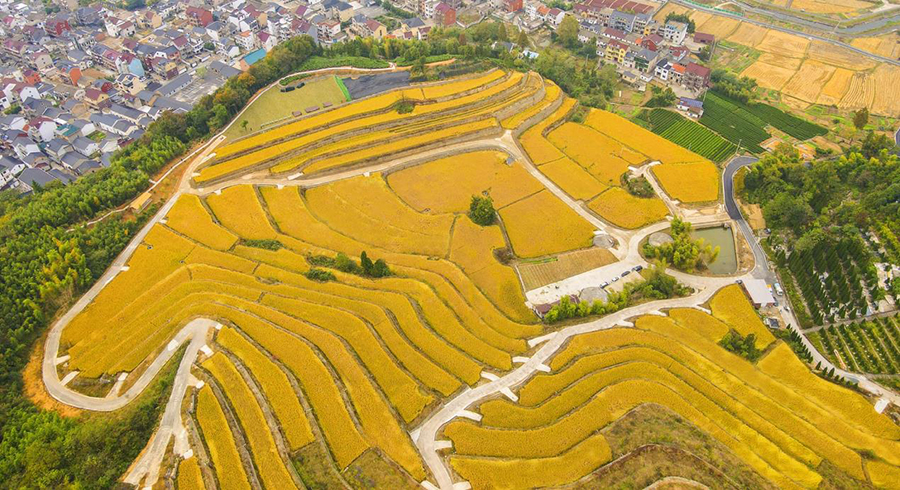Dake Rechsand, a Dubai-based company offering sustainable solutions in water conservation and desert farming, has unveiled a success story that illustrates an ideal, integrated use of its Breathable Sand and IDer honeycomb water harvesting technologies. This unique combination, in tandem with sensor-oriented intelligent irrigation systems, has transformed an "unproductive" barren mountain in the Fuyang district of Zhejiang Province, East China, into a high-yield rice field.
Locally dubbed the ‘Ecological Sponge Paddy Fields’, the mountains redefine possibilities in desert farming. Previously deemed non-arable and unfit for agriculture, the barren mountains were subject to multi-level technology application. The soil was enhanced with the Breathable Sand medium, inducing air permeability and water retention (anti-seepage) properties. Typically, this action enables crops to retain water for extended periods after one-time irrigation, leading to a total reduction in water usage by 80% compared to conventional farming.
Secondly, the excessive irrigation run-offs and rainwater are captured through IDer honeycomb water harvesting systems, which perform filtration and store potable water in underground reservoirs. Using efficient redirection mechanisms, the stored water is reused for irrigation, creating "circularity" in farming systems. In addition, the rice fields are fitted with irrigation-monitoring smart sensors, which enable operators to automate several functions and further optimize resource usage.
"Ecological Sponge Paddy Fields challenge the conventional notions about land "arability". Barren mountains, originally deemed unproductive, are now teeming with life, with golden-coloured rice fields terraced on them. But their aesthetic appeal is only part of the story; their real value lies in significantly lower resource usage, high yield, and total ecological improvement," said Chandra Dake, CEO and Founder of Dake Rechsand.
"The integrated use of Dake Rechsand’s proprietary solutions, and its feasibility with smart sensors, has led to an exemplary prototype in the Fuyang District of China, inspiring a generation of sustainability-focused farmers and entrepreneurs across the world. This development is consistent with the growing emphasis on sustainable farming and climate actions, on which the recently concluded COP26 and increasing net-zero pledges are predicated. To that end, the mere existence of barren-mountains-turned-rice-fields is a beacon of hope — for the carbon-intensive agricultural sector and the water-stressed MENA region," said Chandra Dake.
The multi-fold value of breathable sand and IDer harvesting can be summarized as follows:
Water-saving: The anti-seepage, water retention property of Breathable Sand minimizes irrigation requirements, enabling agricultural activities in water-stressed regions like MENA.
Emission reduction: Agriculture sector is a leading cause of climate change due to its embodied and operational carbon footprint. Tech-driven optimization and efficiency enhancements help farmers keep emissions in check.
Fertilizer preservation: Anti-seepage properties also help the soil medium preserve fertilizers, thereby mitigating leakages and non-point source (NPS) pollution.
High yield: The air permeability function of Breathable Sand enables an effective supply of nutrients to the roots, leading to high yield and the possibility of growing a wide variety of crops.
Ecological improvement: Integrated application of Breathable Sand and IDer harvesting is a tested-and-proven method to achieve land remediation and induce ecological balance.



